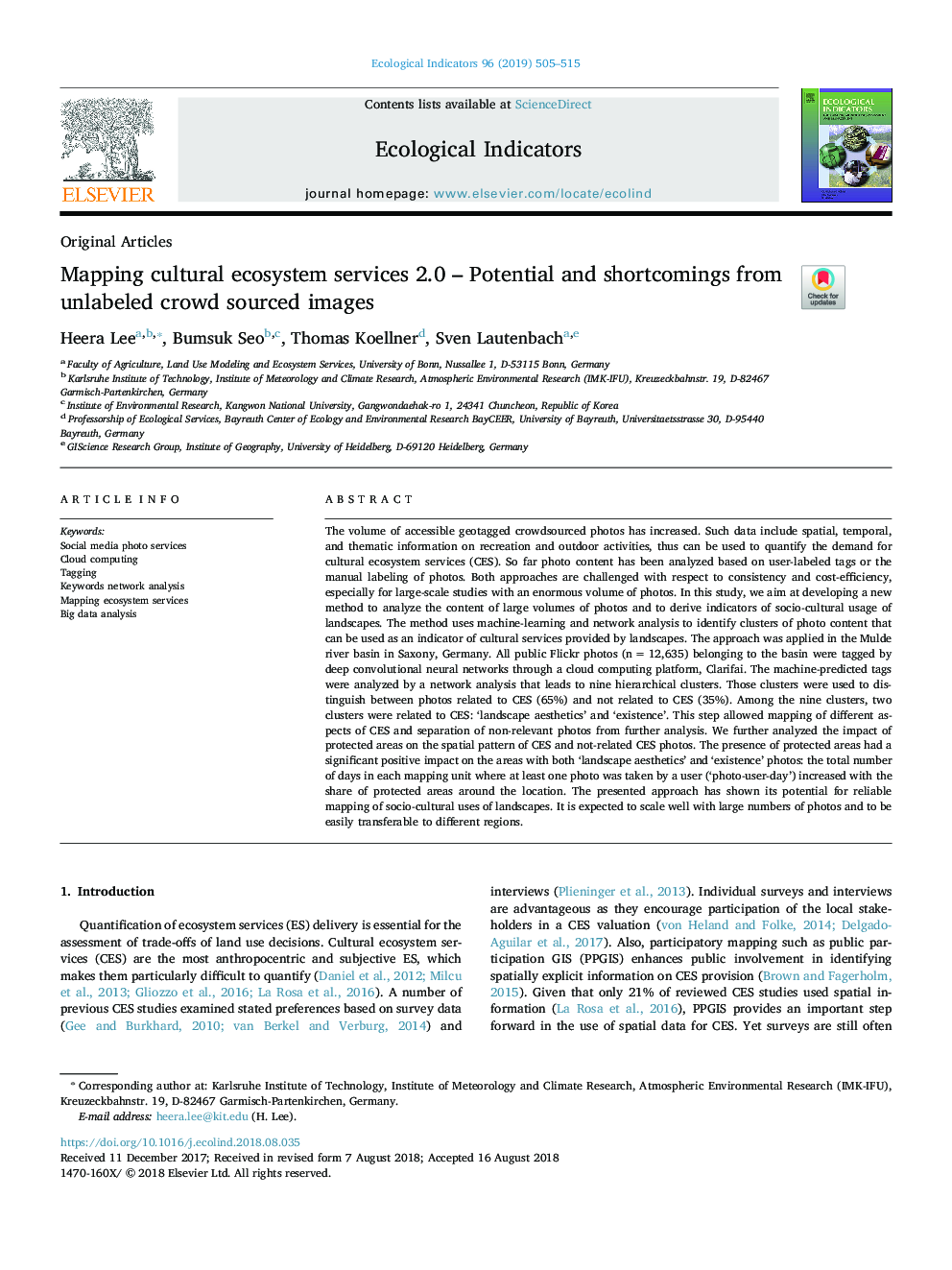| Article ID | Journal | Published Year | Pages | File Type |
|---|---|---|---|---|
| 11030497 | Ecological Indicators | 2019 | 11 Pages |
Abstract
The volume of accessible geotagged crowdsourced photos has increased. Such data include spatial, temporal, and thematic information on recreation and outdoor activities, thus can be used to quantify the demand for cultural ecosystem services (CES). So far photo content has been analyzed based on user-labeled tags or the manual labeling of photos. Both approaches are challenged with respect to consistency and cost-efficiency, especially for large-scale studies with an enormous volume of photos. In this study, we aim at developing a new method to analyze the content of large volumes of photos and to derive indicators of socio-cultural usage of landscapes. The method uses machine-learning and network analysis to identify clusters of photo content that can be used as an indicator of cultural services provided by landscapes. The approach was applied in the Mulde river basin in Saxony, Germany. All public Flickr photos (nâ¯=â¯12,635) belonging to the basin were tagged by deep convolutional neural networks through a cloud computing platform, Clarifai. The machine-predicted tags were analyzed by a network analysis that leads to nine hierarchical clusters. Those clusters were used to distinguish between photos related to CES (65%) and not related to CES (35%). Among the nine clusters, two clusters were related to CES: 'landscape aesthetics' and 'existence'. This step allowed mapping of different aspects of CES and separation of non-relevant photos from further analysis. We further analyzed the impact of protected areas on the spatial pattern of CES and not-related CES photos. The presence of protected areas had a significant positive impact on the areas with both 'landscape aesthetics' and 'existence' photos: the total number of days in each mapping unit where at least one photo was taken by a user ('photo-user-day') increased with the share of protected areas around the location. The presented approach has shown its potential for reliable mapping of socio-cultural uses of landscapes. It is expected to scale well with large numbers of photos and to be easily transferable to different regions.
Related Topics
Life Sciences
Agricultural and Biological Sciences
Ecology, Evolution, Behavior and Systematics
Authors
Heera Lee, Bumsuk Seo, Thomas Koellner, Sven Lautenbach,
